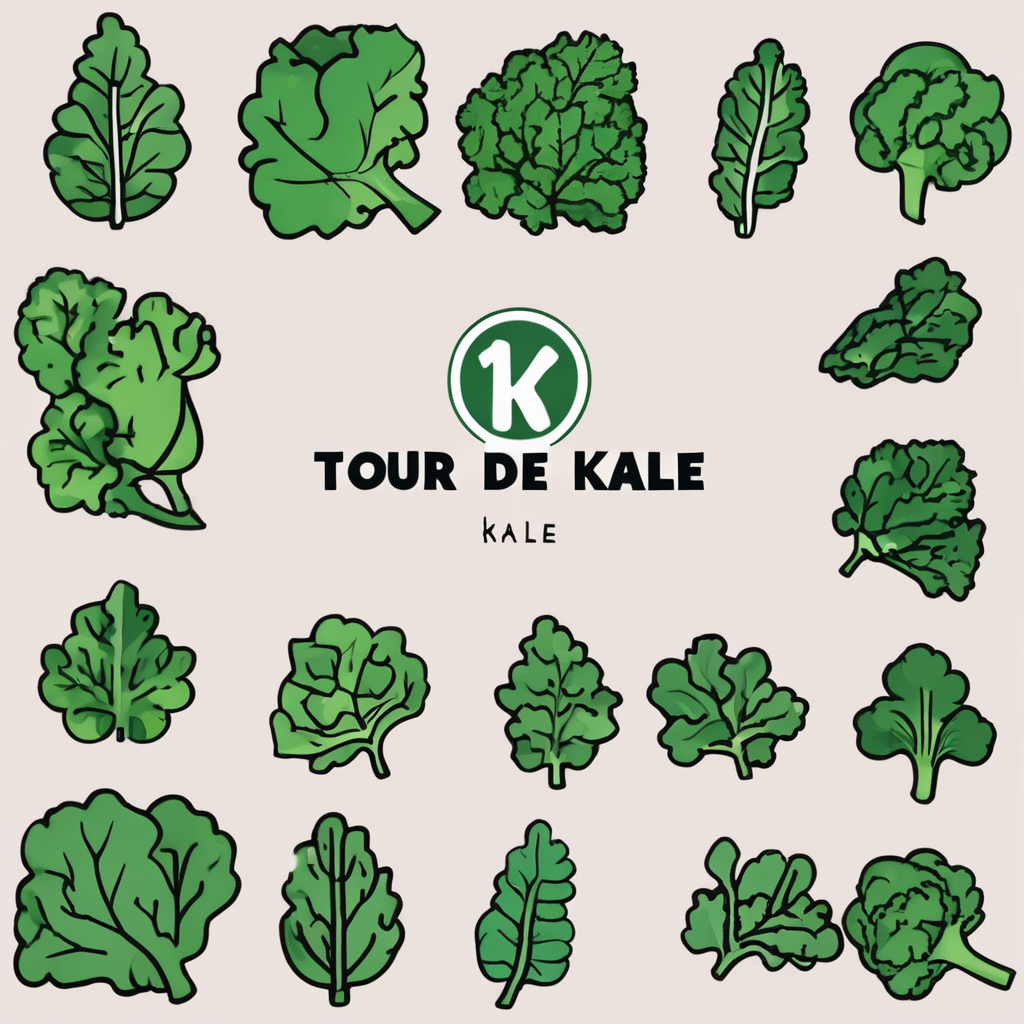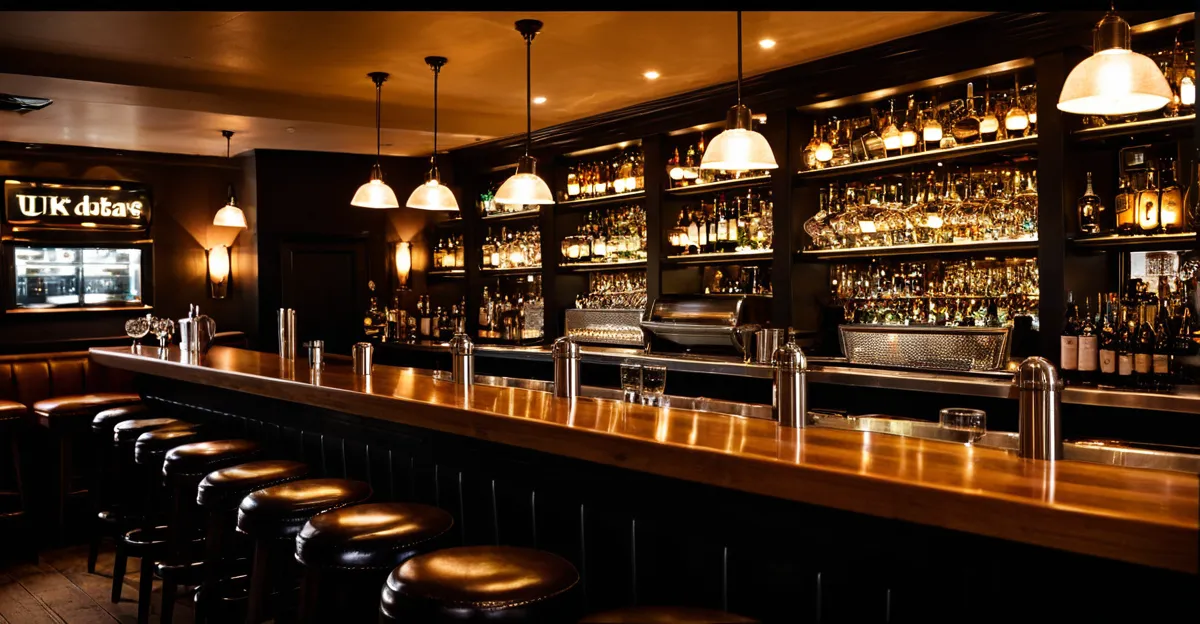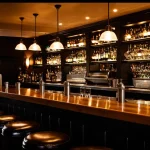Crafting Distinctive Ambience in UK Hospitality Venues
Creating an unforgettable atmosphere is pivotal for UK bars and UK restaurants aiming to enhance guest experiences. Atmospheric design plays a vital role, where lighting, acoustics, and décor work in harmony to set the mood. Soft, warm lighting can evoke intimacy, while vibrant tones energize a lively crowd. Sound levels are carefully tuned to encourage conversation without overwhelming background music.
Incorporating local culture and storytelling into the design deepens the connection between guests and the venue. For example, historic references or regional art can subtly tie the space to its surroundings, adding layers of meaning beyond aesthetics. This makes each visit more memorable and personal.
In the same genre : Discover how uk kitchen ambiance transforms your dining & bar experience
Atmospheric design in hospitality must balance sensory elements, maintaining comfort while stimulating interest. The choice of materials, furniture, and even scents contribute to the overall experience. Thoughtful integration ensures that both UK bars and UK restaurants create distinctive settings, inviting guests to return not just for food and drinks, but for the unique atmosphere itself.
Impactful Interior Design and Thematic Concepts
Creative interior design is essential in crafting memorable hospitality experiences. Through thoughtful choice of materials, lighting, and colour schemes, venues set the tone that resonates with guests. For example, restaurant themes often employ bespoke furniture and textured surfaces to stimulate sensory appeal and mood.
This might interest you : Top tips for maximizing kitchen efficiency in uk restaurants
In the UK, themed restaurants such as those inspired by historical eras or local culture showcase how imaginative concepts translate into immersive environments. Equally, bar interiors that incorporate eclectic art or innovative lighting create distinctive atmospheres that encourage socialising. These venues use space strategically, balancing aesthetics and functionality to enhance comfort and flow.
Hospitality designers emphasise that successful thematic development depends on narrative cohesion, consistency across visual elements, and adaptability to brand identity. Themes should not overwhelm but complement the dining or drinking experience. They advocate for research-backed creativity, blending trend awareness with client vision to deliver spaces that engage guests while providing practical operational layouts. This approach helps businesses build lasting emotional connections with patrons, driving loyalty and word-of-mouth promotion.
Strategic Lighting and Music for Memorable Settings
Creating memorable hospitality environments relies heavily on lighting in hospitality and music atmosphere. Dynamic lighting schemes set the stage by adjusting brightness, color, and intensity to reflect different times of day or event types. For instance, warm amber hues evoke comfort during dinner service, while cooler blues may energize a morning café crowd. This purposeful control shapes guests’ emotional responses and encourages longer stays.
Alongside, curating music selects genre, tempo, and volume tailored to the venue’s intended vibe. Thoughtful ambience control ensures sound levels neither overpower conversation nor lapse into dull silence. Soft jazz or acoustic sets typically enhance relaxed dining, while upbeat tunes might animate bar areas. Balancing these elements demands constant attentiveness to crowd density and activity.
Together, integrating lighting and sound within sensory design creates a holistic guest experience. Coordinated shifts in both domains heighten immersion, influencing perception from arrival to departure. Effective sensory environments respond fluidly, supporting branding goals and promoting guest satisfaction. Ultimately, strategic use of these elements transforms ordinary places into appealing destinations renowned for atmosphere and comfort.
Personalised Customer Service and Staff Training
Creating customer service excellence begins with comprehensive staff training focused on guest engagement. Training programs often emphasize active listening, empathy, and quick problem-solving to ensure staff can anticipate and meet guest needs effectively. When employees learn to understand subtle cues, they can offer personalised experiences that make visitors feel genuinely valued.
Anticipating guest needs is crucial. For example, a hotel receptionist aware of a guest’s dietary restrictions can proactively suggest suitable dining options, enhancing satisfaction. Likewise, pub staff trained to remember regulars’ favourite drinks demonstrate attentiveness that fosters loyalty. These moments of personalised attention transform routine interactions into memorable ones.
Fostering genuine connections goes beyond service scripts. Encouraging staff to share a smile, maintain eye contact, and engage in small talk creates warmth and trust. Stories from UK venues often highlight employees who have gone above and beyond—such as one pub server who arranged a surprise birthday celebration, demonstrating how thoughtful actions elevate guest experiences.
Ultimately, investing in staff development cultivates a service culture where personalised customer service thrives, ensuring guests leave with positive impressions and a desire to return.
Incorporating Innovation and Novelty to Surprise Guests
Elevate hospitality innovation to spark guest delight
Pioneering hospitality innovation is key to maintaining guest delight and keeping venues fresh in a competitive market. UK venues increasingly adopt surprise elements by introducing rotating experiences and pop-up themes. For instance, some restaurants implement immersive experiential dining with interactive menus or projection mapping to captivate diners beyond food alone. This type of novelty transforms eating into an event, deeply engaging guests.
Technology also plays a pivotal role. Venues are integrating augmented reality or AI-driven personalized recommendations, heightening excitement through unpredictability. However, the focus remains on seamless integration so guests feel enchanted, not overwhelmed.
Experts advise a mindset of continuous reinvention. Regularly refreshing concepts—from seasonal pop-ups to unexpected entertainment—sustains curiosity and boosts loyalty. An effective strategy includes listening closely to guest feedback to tailor surprise elements specifically to preferences, enhancing satisfaction.
Incorporating innovation in subtle, meaningful ways ensures an evolving experience that surprises and delights without sacrificing comfort or quality. This balance underpins successful hospitality innovation, ultimately driving memorable guest experiences and repeat visits.
Real-life Examples and Industry Case Studies
When exploring UK bar case studies focused on atmosphere, several standout venues demonstrate how ambiance shapes customer experiences. For instance, London’s speakeasy-style bars create intimate settings that many patrons describe as “unforgettable” in customer testimonials. These environments blend dim lighting, curated music, and unique decor to foster a cozy yet lively vibe.
A popular restaurant atmosphere example comes from a seaside eatery in Brighton, where open-air seating paired with soft acoustic performances enhances guest relaxation. Visitors repeatedly share stories about how these subtle touches elevate their dining experience, making the visit more than just a meal.
Industry leaders emphasize that crafting such atmospheres involves attention to detail and guest-centric design. Hospitality experts advocate for integrating sensory elements—like scent and sound—to create multi-layered, memorable experiences. These lessons guide new establishments aiming to replicate the success seen in these exemplary venues.
By studying these rich examples, operators can learn how atmosphere influences customer loyalty and brand reputation, ultimately transforming everyday service into standout experiences.


